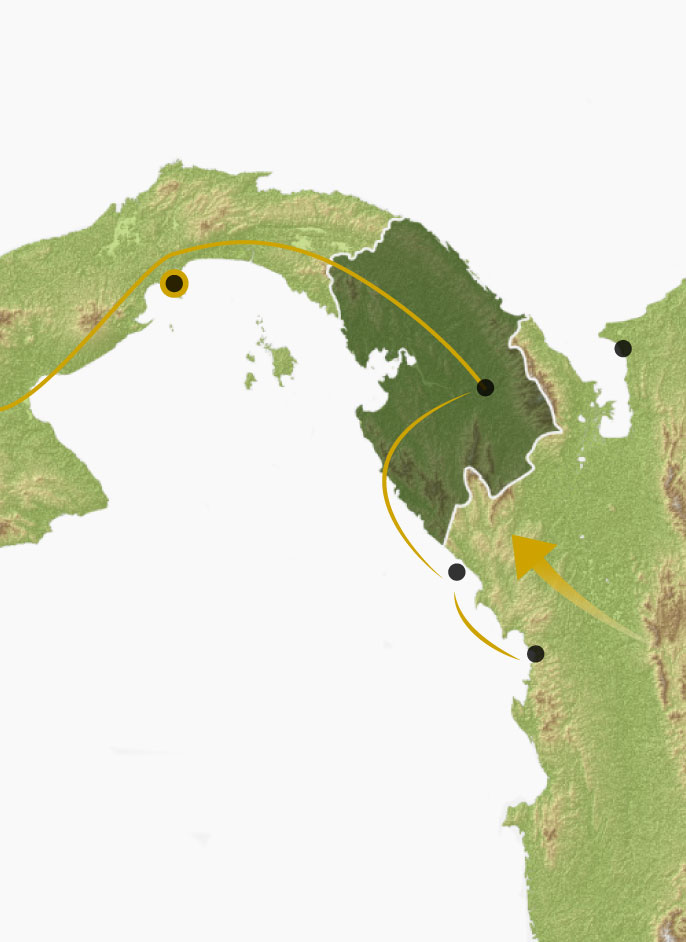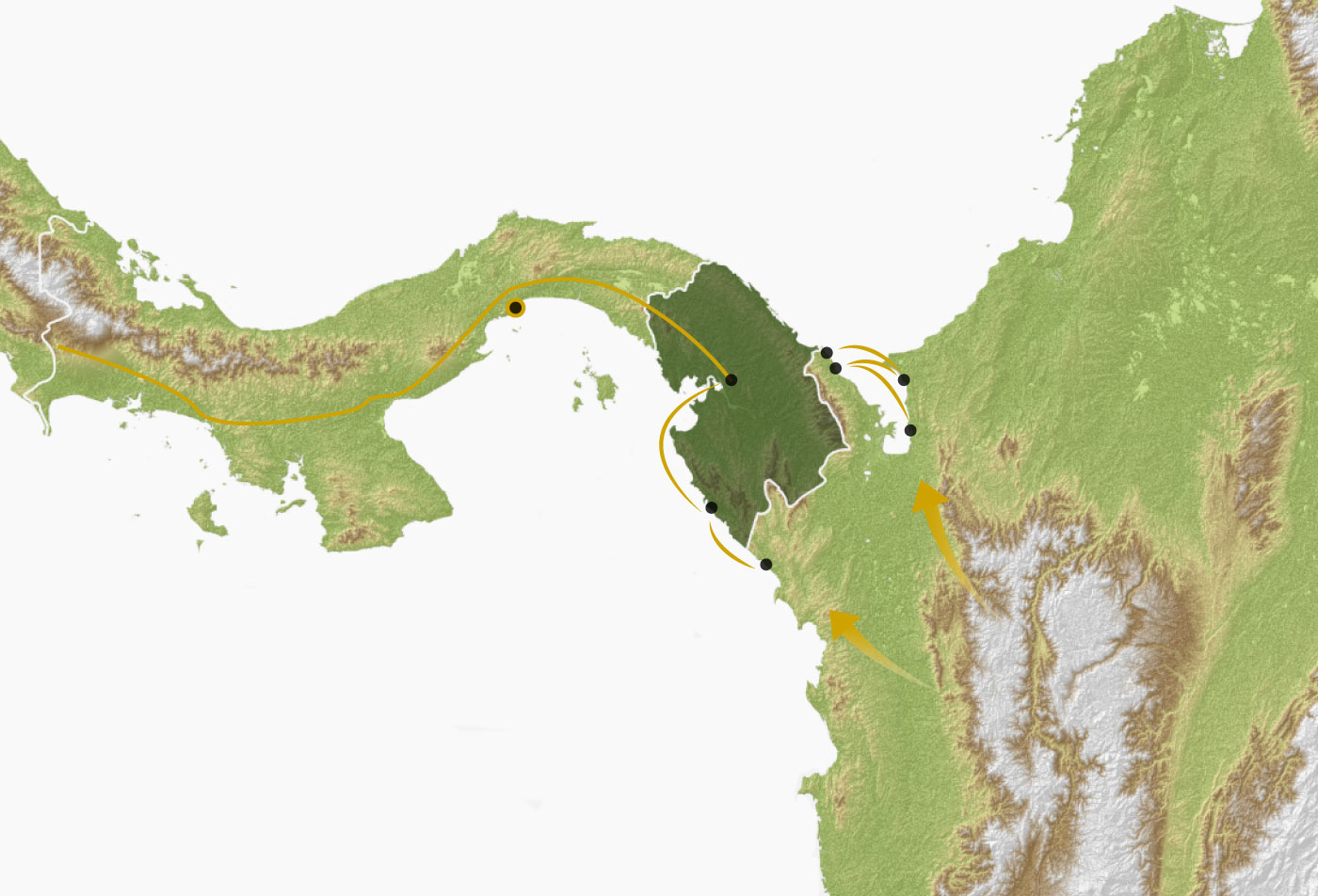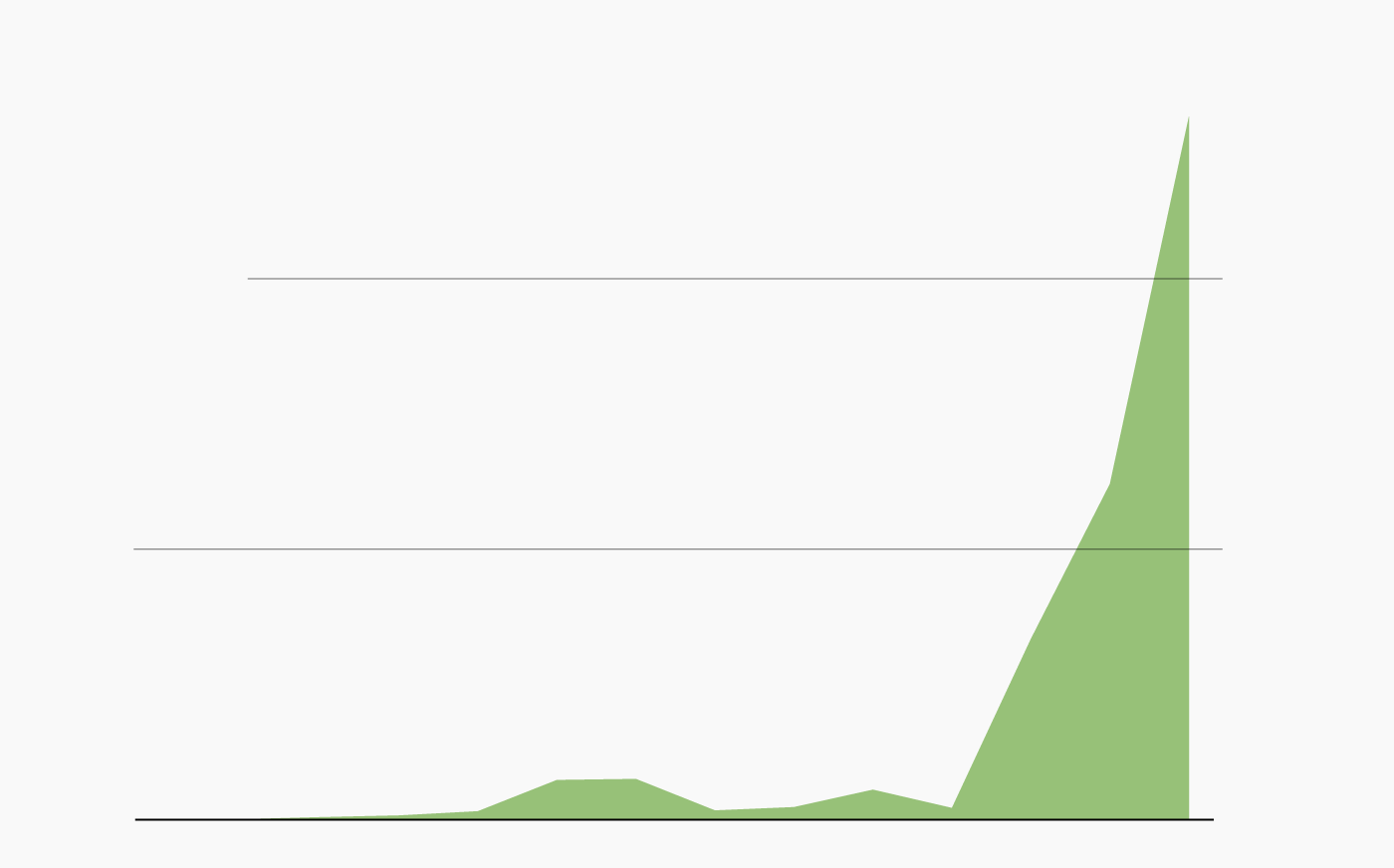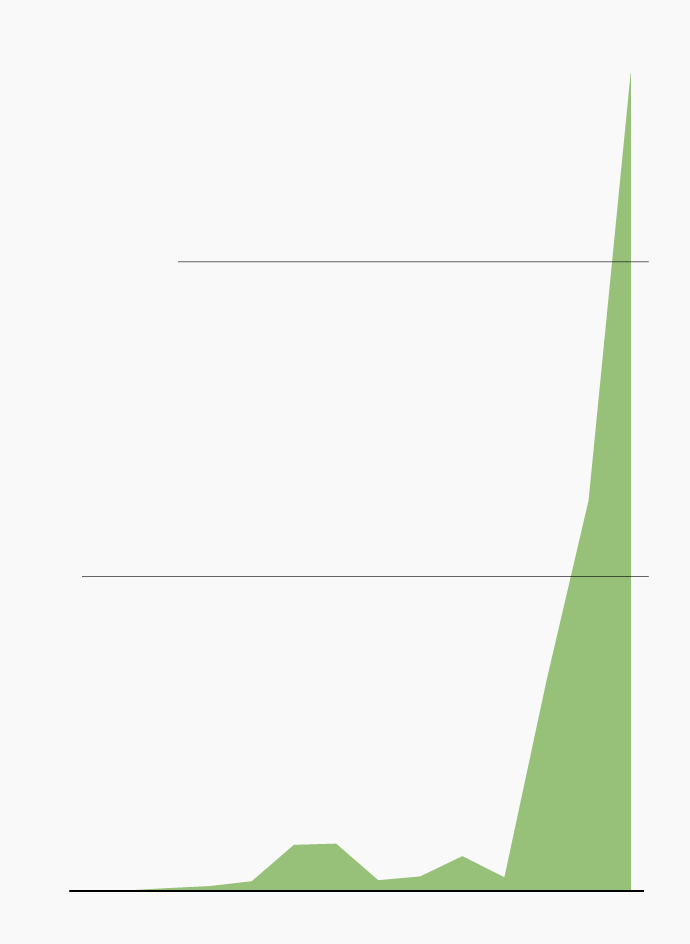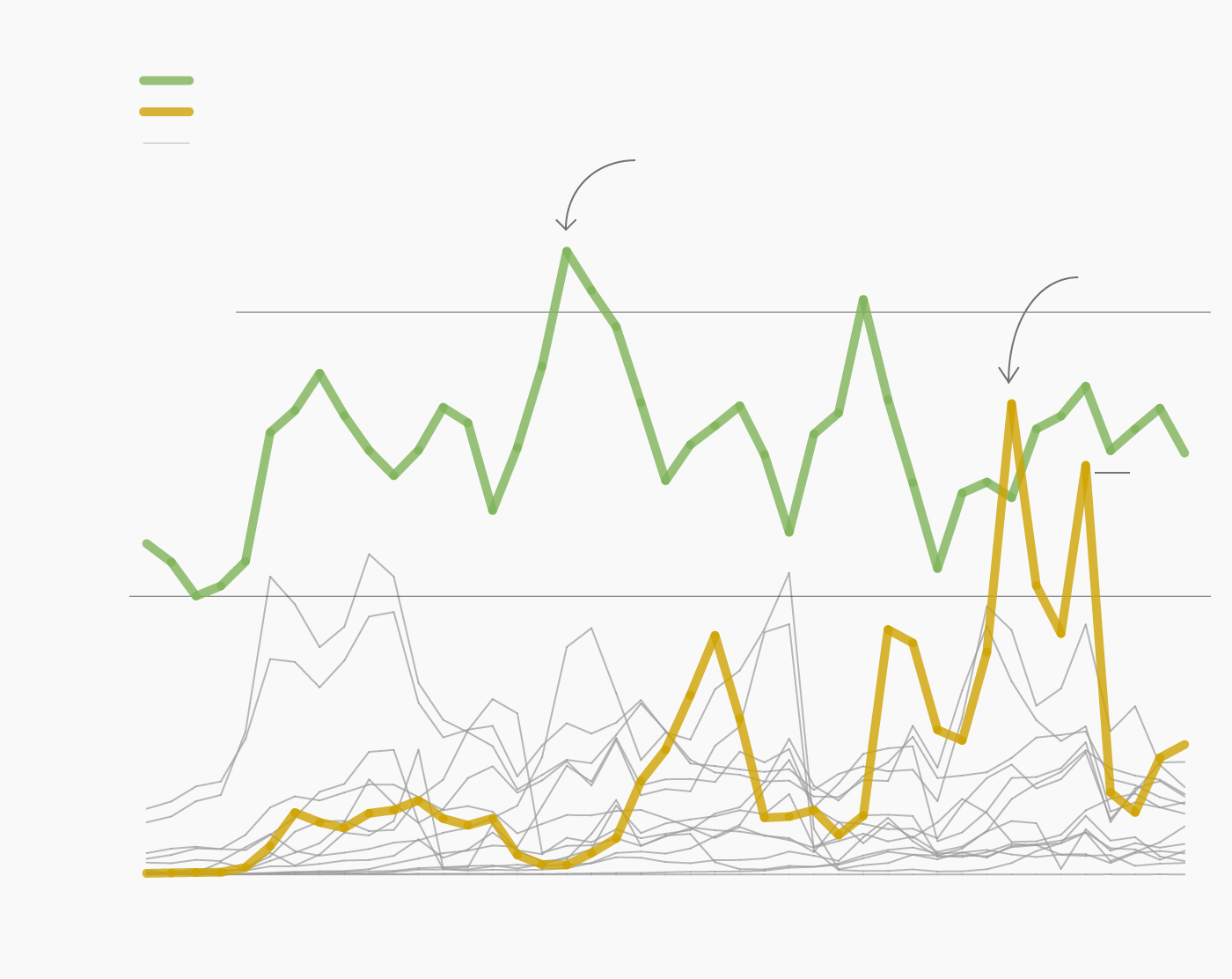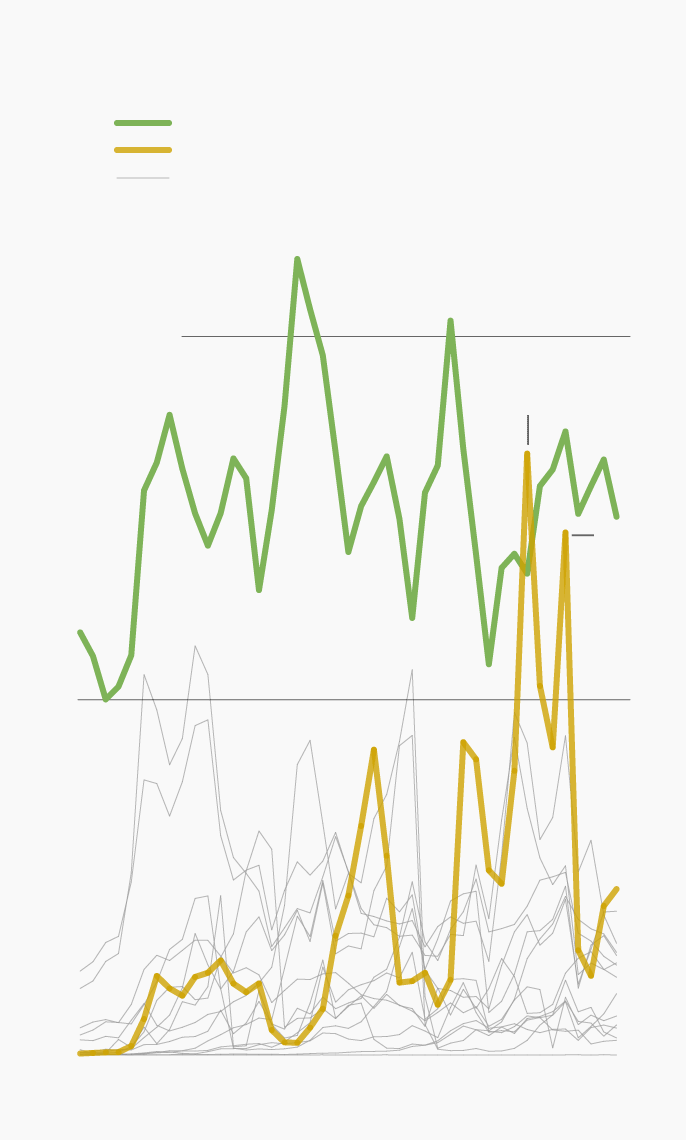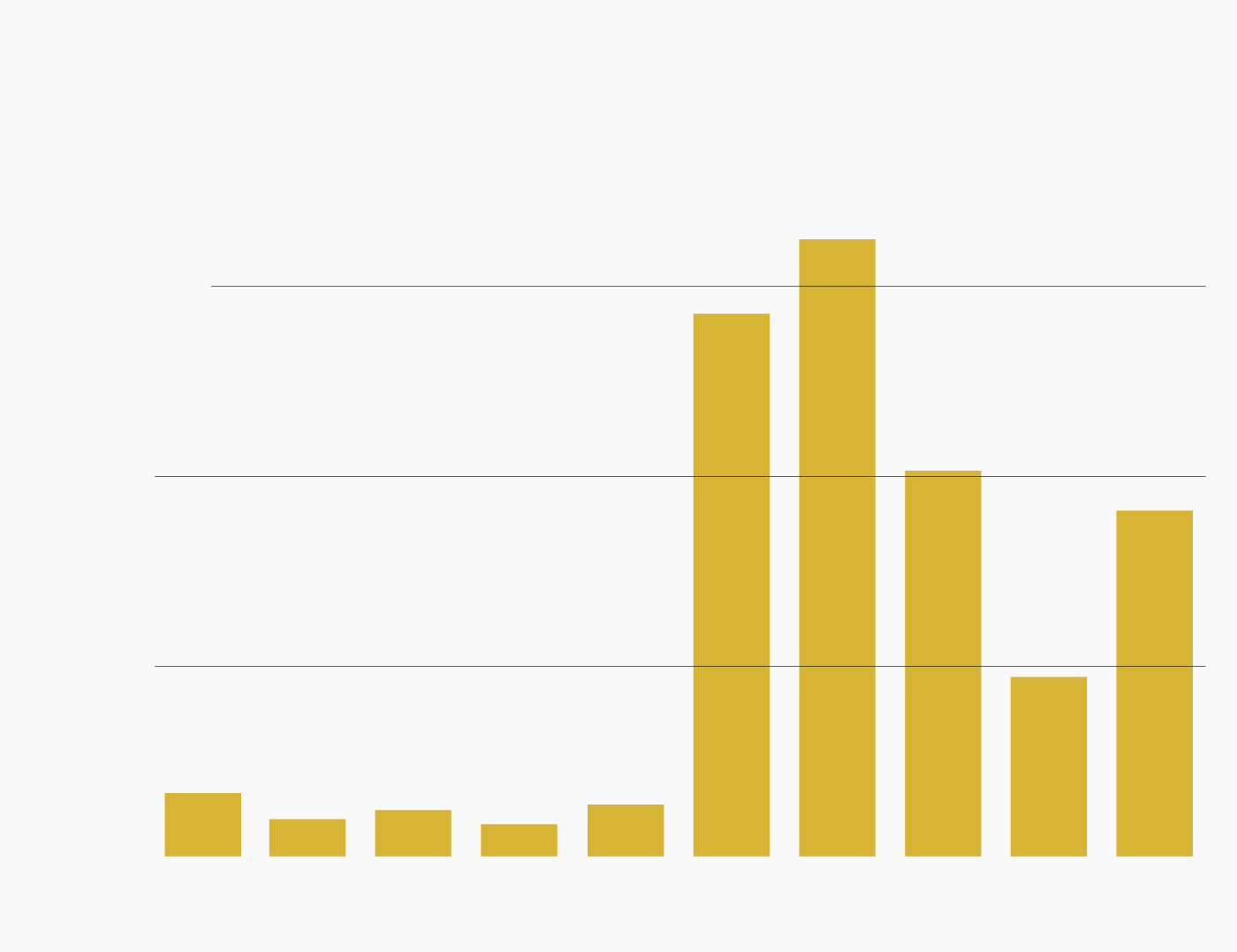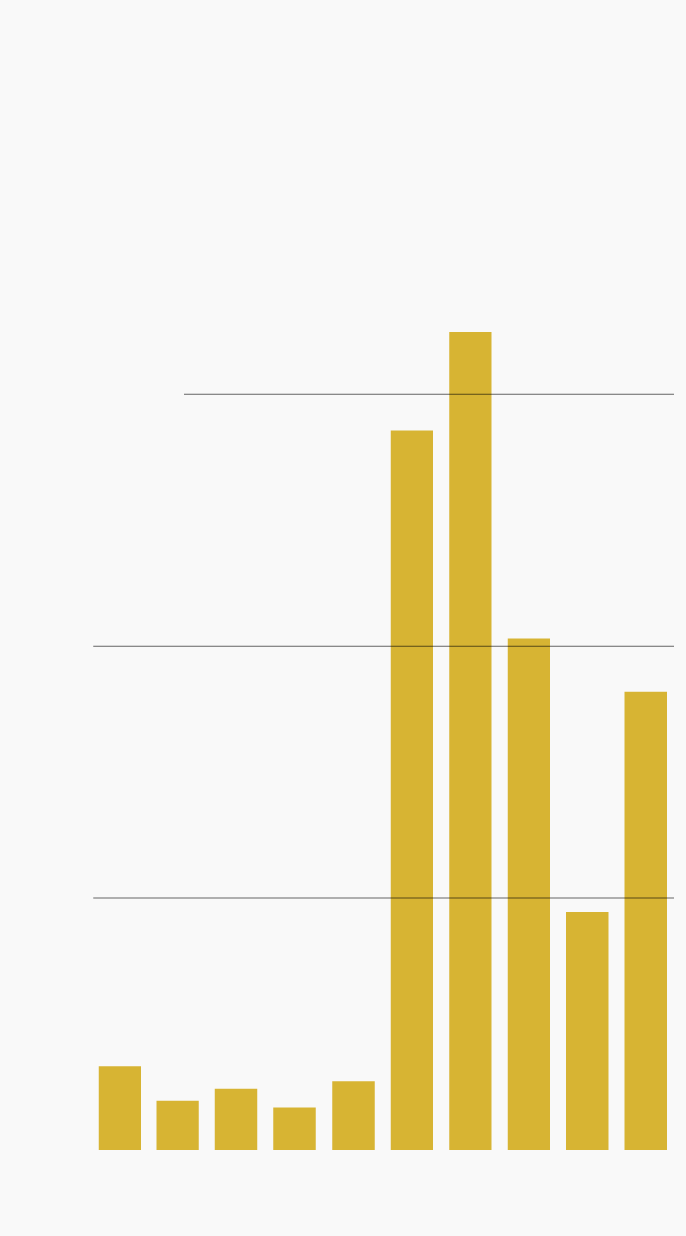The Long Walk
The Impossible Route from Venezuela to the US


"The jungle is not easy (...); you see dead bodies along the way
and many children crying and abandoned."

7,722,579 million
Venezuelans have been leaving their country since 2014, according to the UN Refugee Agency (UNHCR) and the International Organization for Migration (IOM).
Considering that the population of Venezuela is approximately 30 million, the number of people who have left represents about 25% of the country's population.
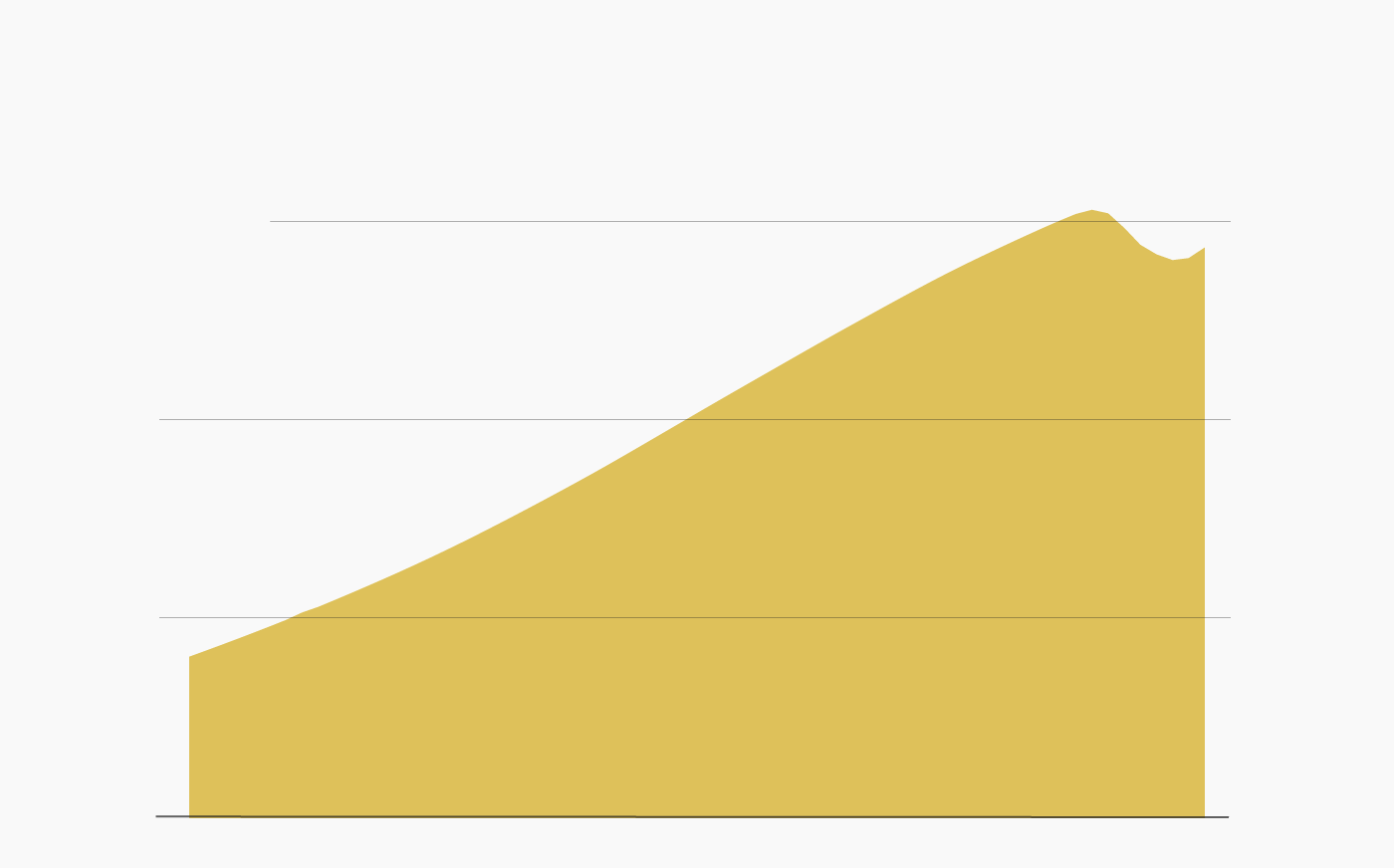
2016
International
sanctions
30,000,000 people
20,000,000
10,000,000
1980
2000
2020
1960
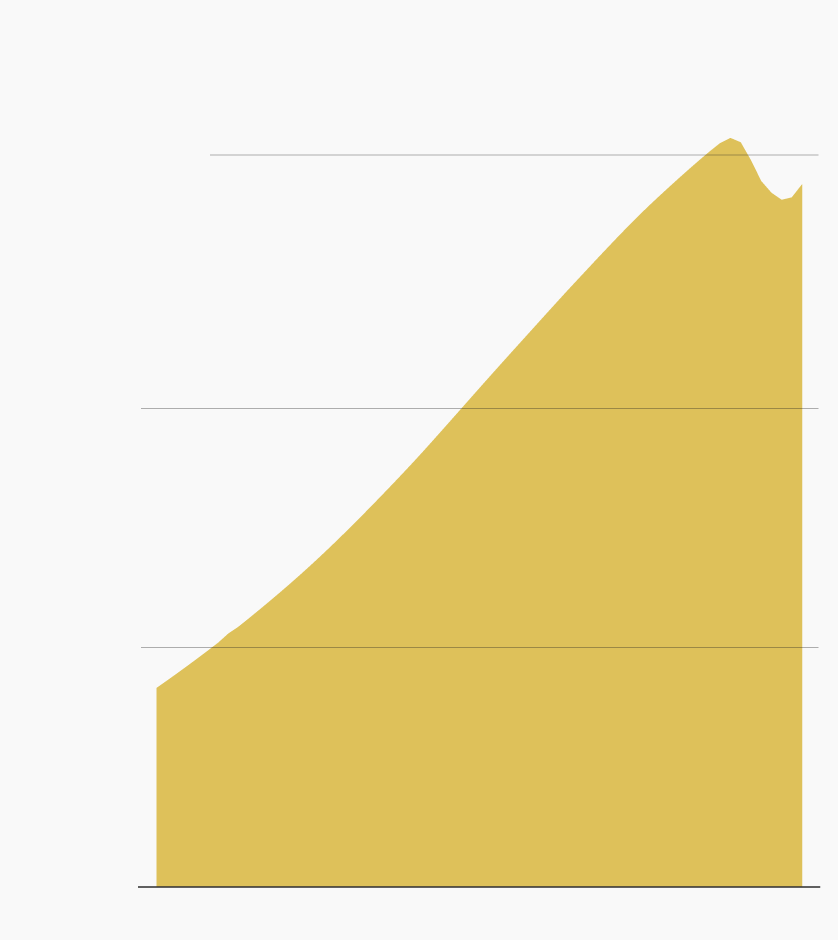
2016
International
sanctions
30,000,000 people
30,000,000
30,000,000
1980
2000
2020
1960

2013
International oil
prices fall
120 $/b
2012
$109.45
80
2020
$41.47
40
1980
1990
2000
2010
2020

2013
International oil
prices fall
120 $/b
2012
$109.45
80
2020
$41.47
40
1980
1990
2000
2010
2020

2012
$372.59b
300 billion USD
200
2002-2003
Venezuela general strike
2020
$43.78b
100
1980
1990
2000
2010
2020
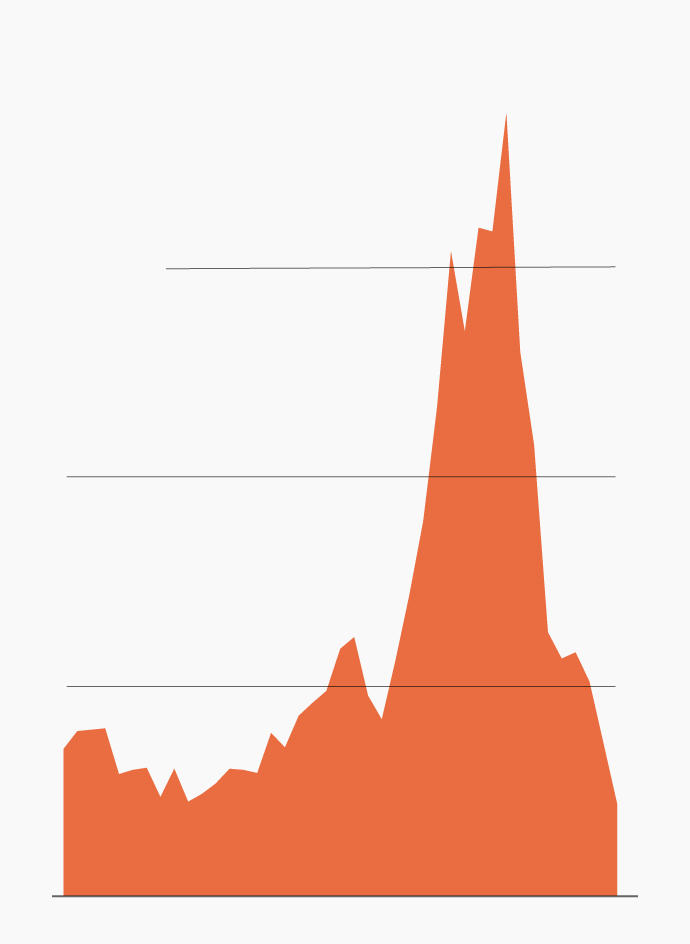
2012
$372.59b
300 billion USD
200
2002-2003
Venezuela general strike
100
2020
$43.78b
1980
1990
2000
2010
2020
The economic crisis, coupled with food shortages, insecurity, and a general collapse of services such as water supply and electrical power, sparked massive protests against Maduro's administration in 2014 and 2017 across the country.
With no short-term prospects for improvement, Venezuelans initially left their country by plane. However, as the economy deteriorated further, those unable to afford flight tickets had to flee by car, bus, or even on foot to several countries —Colombia, Ecuador, Peru, Brazil, Argentina, Chile, Bolivia, Uruguay, and Paraguay—. In recent years, some have made the perilous journey all the way to North America, reaching the US through the Darien Gap, a dangerous jungle separating Colombia from Panama.
Venezuela has witnessed the largest displacement of people in Latin America, according to UN. Some organizations argue it constitutes the world's largest crisis. The Center for Strategic and International Studies noted that the 7.7 million Venezuelan migrants and refugees represent "an even larger number than the displacement of Syrians or Ukrainians outside their countries.

17.7%
25%
82.3%
75%

17.7%
25%
82.3%
75%




